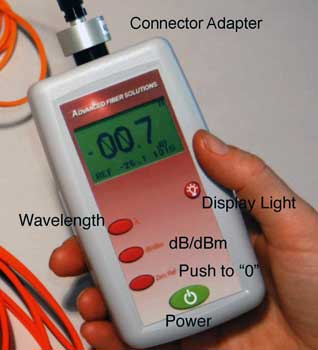All You Need to Know Concerning Robotic Vision and Its Applications in Advanced Optical Measurement Equipments
Robotic vision stands for a considerable improvement in the intersection of computer vision, expert system, and artificial intelligence. This technology enhances the accuracy of optical measurement systems, allowing real-time data evaluation and boosted high quality control. Its impact extends numerous markets, from manufacturing to healthcare. Nevertheless, the developing landscape of robot vision questions about future capabilities and applications (fibre testing equipment). What advancements exist in advance in this transformative field?
Understanding Robotic Vision: Key Concepts and Technologies
Robotic vision incorporates the innovations and methods that make it possible for equipments to analyze and understand visual info from their environment. This field combines components of computer system vision, synthetic knowledge, and artificial intelligence to promote computerized decision-making based on aesthetic information. Secret concepts consist of photo processing, which involves the enhancement and analysis of images to draw out meaningful functions, and item acknowledgment, which permits machines to identify and classify objects within a scene.

The Integration of Robotic Vision With Optical Dimension Equipments
As industries increasingly demand precision and efficiency, the assimilation of robotic vision with optical dimension systems has actually arised as a transformative method. This harmony allows robotics to regard and interpret their environments, improving the capability of optical dimension systems to analyze and analyze objects with unmatched accuracy. By outfitting optical sensors with sophisticated imaging modern technologies, robotic vision enables real-time information collection and handling, promoting instant adjustments to measurement specifications.
The combination equips automated systems to identify variations in dimensions, surface area top quality, and placement, which are vital in top quality control procedures. Boosted algorithms, such as artificial intelligence, further boost this assimilation by improving the systems' capability to adapt to various environments and situations. The assimilation not only improves measurement processes yet likewise reduces mistakes, making sure that products satisfy rigid market criteria, therefore strengthening the function of robot vision in the future of optical measurement systems.
Applications of Robotic Vision in Production
In contemporary manufacturing atmospheres, making use of vision systems has reinvented manufacturing processes by allowing equipments to perform jobs with remarkable precision and rate. Robotic vision systems are increasingly utilized for quality assurance, where they examine items for issues and assurance adherence to requirements. These systems use cams and progressed algorithms to assess products in real-time, considerably lowering the danger of human error.
Additionally, robotic vision assists in automation in production line, permitting robots to precisely recognize components and assemble them with very little downtime. This innovation likewise improves inventory management, as vision systems can keep an eye on stock levels and find inconsistencies, assuring a smooth supply chain.
Moreover, robotic vision help in the implementation of smart factories, where data from vision systems can be incorporated with other innovations to optimize workflows. In general, the applications of robotic vision in manufacturing demonstrate its vital duty in improving efficiency, top quality, and productivity throughout different markets
Robotic Vision in Medical Care: Changing Client Care
In recovery, robot vision help in keeping track of patient development and tailoring treatment sessions discover here to specific requirements. It sustains clinical professionals by automating jobs such as information collection and individual surveillance, enabling even more time to concentrate on direct client interaction. Additionally, robotic vision enhances telemedicine by allowing remote medical diagnosis and virtual examinations, bridging the void between individuals and doctor. Generally, the application of robot vision in healthcare is revolutionizing client treatment, leading to boosted end results, performance, and individual fulfillment.
Future Fads and Developments in Robotic Vision Modern Technology
The fast evolution of robotic vision innovation promises to further enhance its applications throughout various industries, consisting of medical care. Future fads show a significant shift in the direction of integrating fabricated knowledge and equipment discovering, allowing systems to pick up from vast datasets and boost accuracy with time. Boosted sensor modern technologies and deep knowing formulas are expected to refine object recognition capabilities, permitting robotics to translate intricate atmospheres much more effectively.

The combination of augmented truth (AR) with robot vision will likely change just how robots help in surgical treatments and diagnostics. This synergy will facilitate real-time information visualization, improving decision-making procedures. Furthermore, miniaturization of components will certainly cause more compact and versatile robotic vision systems suitable for a selection of tasks. As these advancements unfold, markets will certainly witness raised automation and effectiveness, solidifying robot vision as a cornerstone of cutting-edge technological visit the website options.
Often Asked Questions
What Are the Main Elements of a Robotic Vision System?
The main parts of a robot vision system consist of video cameras for image capture, cpus for data analysis, formulas for interpretation, and actuators for motion. With each other, these elements make it possible for robotics to view and communicate with their atmosphere properly.
Just How Does Robotic Vision Improve Precision in Measurements?
Robotic vision improves dimension accuracy by using innovative imaging technologies, making it possible for precise object discovery and spatial analysis. This ability lowers human error, enhances repeatability, and enables real-time modifications, ultimately improving total measurement reliability and effectiveness.
What Industries Benefit Most From Robotic Vision Technology?
Various sectors profit substantially from robotic vision modern technology, including manufacturing, healthcare, agriculture, and logistics. These sectors make use of boosted look at this site precision, effectiveness, and automation, leading to enhanced productivity and lowered operational costs in their corresponding procedures.
Can Robotic Vision Equipments Operate In Low-Light Conditions?
Robotic vision systems can certainly operate in low-light conditions, making use of sophisticated sensing units and algorithms to enhance photo quality. This capacity enables them to perform properly in different atmospheres, including commercial and surveillance applications, despite having very little illumination.
What Are the Prices Related To Carrying Out Robotic Vision?
The costs connected with applying robot vision differ considerably, affected by parts such as cams, software program, and combination. Extra expenditures consist of upkeep, training personnel, and potential upgrades to existing systems, which can build up with time.